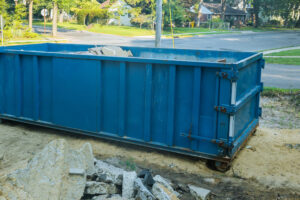Selecting an appropriate short-term fence is essential for preserving efficiency, safety, and security at a building site during the project’s lifetime. However, particular issues arise on construction sites, requiring fence systems that offer both robust confinement and easy mobility. When choosing the ideal fence option, it is important to take several factors into account, such as the size of the site, the length of the project, any unique security needs, and local laws. In this article, we look at the many possibilities for temporary fences, from old chain-links to modern mesh panels that can help construction managers make educated judgments based on their project specifications.
Chain Link
One convenient option that offers non-permanent containment and security on building sites is a chain link fence. Its modular design enables speedy installation and flexibility in adapting to site conditions. The durability of this barrier ensures consistent defense against intrusion and other dangers. The transparency of chain links also improves visibility, which helps with safety management and site monitoring.

We can provide the temporary fencing for your needs
It offers a low-maintenance solution for building projects that promotes efficient workflow and ensures compliance with safety laws. The simplicity of installation and removal makes it an excellent alternative for ensuring security and organization throughout construction operations.
Plastic Barriers/Mesh Fencing
These lightweight, yet robust structures offer a quick and adaptable way to define boundaries and improve safety. Their simplicity of installation enables quick deployment and customization based on site conditions. Additionally, plastic barriers are weather-resistant, which shows resiliency in a variety of climatic circumstances. Their visibility helps to direct pedestrian and vehicle traffic, reducing possible risks. Not only are these transient fence solutions affordable and multifunctional, but also are vital tools in ensuring security and organization on construction sites while also supporting seamless workflow.
Welded Wire Mesh Panels
For temporary fences on building sites, welded wire mesh panels offer a great substitute because of their durability and versatility. These panels offer dependable security and protection, with premium steel wires as their raw material. The heavily welded structure protects both people and property, by ensuring stability and prevention of unauthorized entry. Solar panels are weatherproof, which makes them ideal for extended outdoor usage. This dependable and inexpensive option offers a great alternative to fill-in fences in building projects.
Concrete Jersey Barriers
These barriers serve as a powerful physical barrier, effectively outlining the boundary of the building site. Their strong and heavyweight designs make them resistant to manipulation and unlawful entrance, protecting the location from any risks and invaders. Unlike typical fences, concrete jersey barriers require less upkeep and can resist extreme weather conditions, assuring long-term dependability. Furthermore, their modular form enables quick installation and relocation as building advances, making them an adaptable and practical option for momentary site enclosure.
Hoarding Fencing
This type of fencing works protects the construction area from unwanted entry and potential risks. With its robust design, it efficiently delineates the site’s borders, avoiding accidents while guaranteeing adherence to safety requirements. Furthermore, you can adjust a hoarding fence to meet different site layouts and dimensions, giving it greater application versatility. Its transitory nature allows for simple removal and installation, making it an ideal alternative for shorter building periods. Generally, this type of fencing offers a dependable and adaptable alternative for successfully guarding construction sites while reducing interruptions to adjacent communities.
Factors to Consider
When selecting a temporary fence, you must follow specific criteria to ensure optimal functionality and conformity with the intended purpose. These factors differ according to the location or event you intend to use the fence, such as construction sites, outdoor events, or crowd control. The material composition of the fencing must be compliant with the durability requirements and environmental conditions. To be efficient and convenient, one must also consider the ease of installation and removal. Height and strength criteria are also important for security and containment reasons. It is critical to adhere to regulatory and safety regulations to maintain legal and operational compliance. Finally, you must optimize value by matching the fence’s short-term cost-effectiveness, as it is simply a momentary solution.
You can determine the perfect fill-in fence for your construction site by criteria such as security, visibility, and project duration. Construction managers can pick fence solutions that meet their specific needs while effectively managing risks throughout the project. They can do so by carefully considering parameters such as security requirements, project duration, site layout, and financial constraints. This enables one to choose a fencing option that successfully secures a site, protects pedestrians and workers, and adapts to the changing demands of your project.




